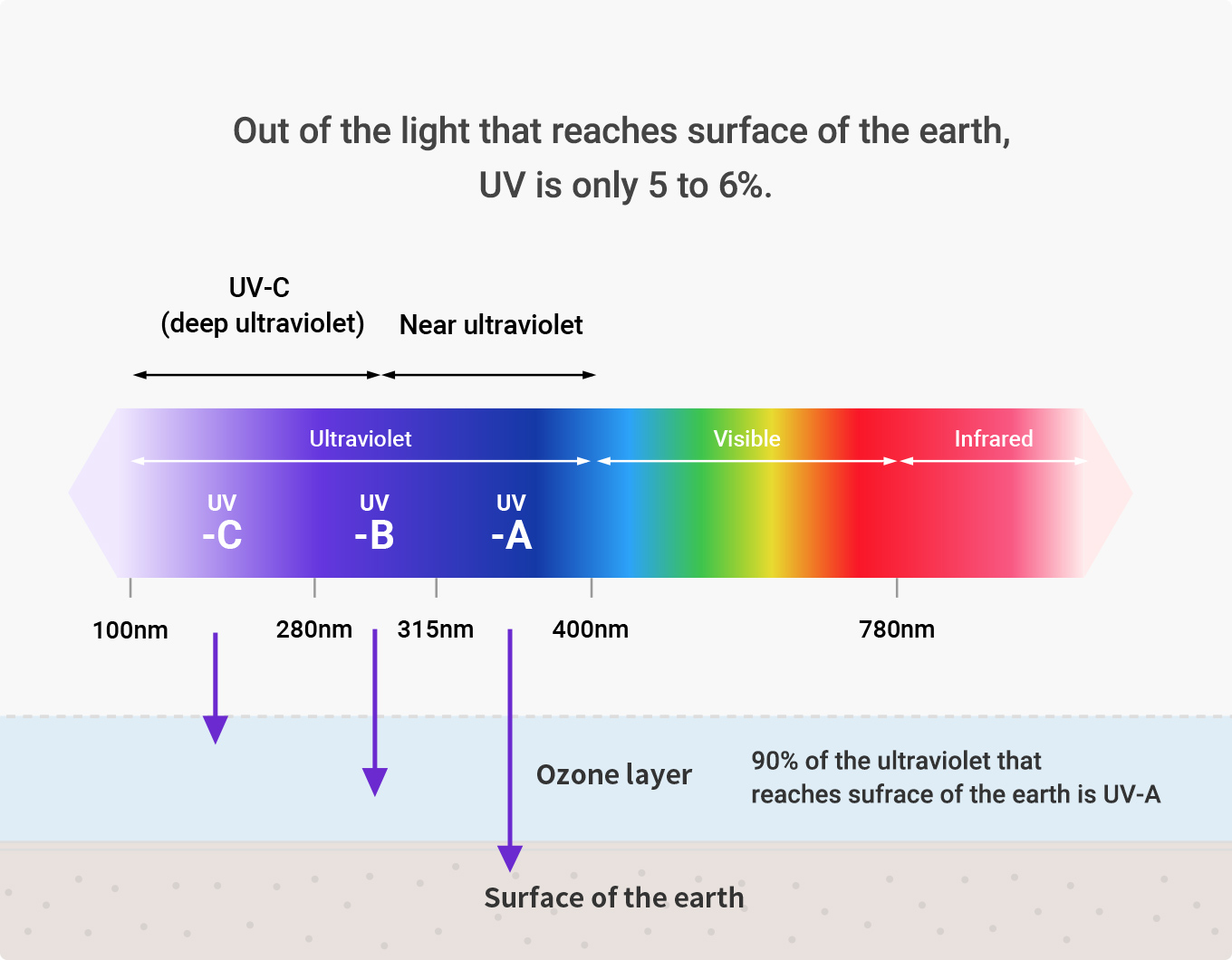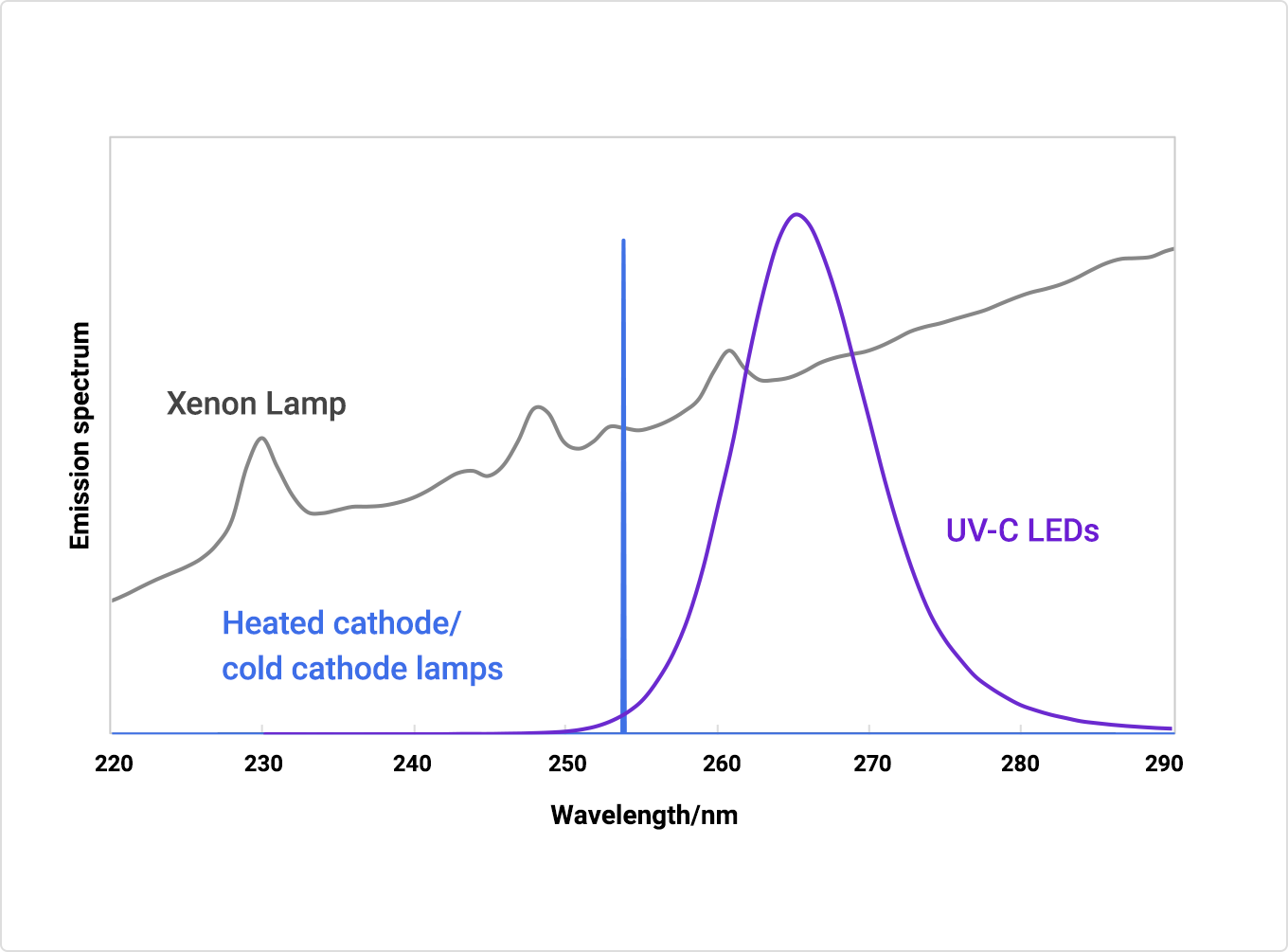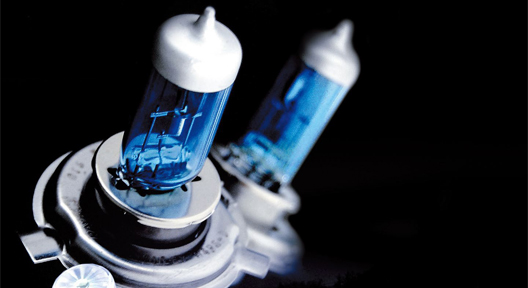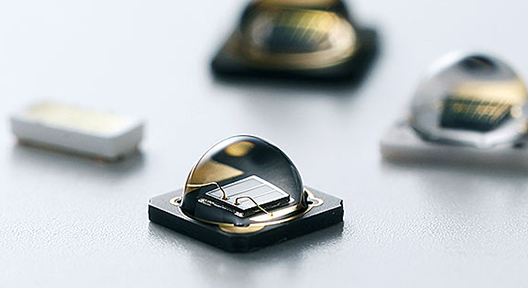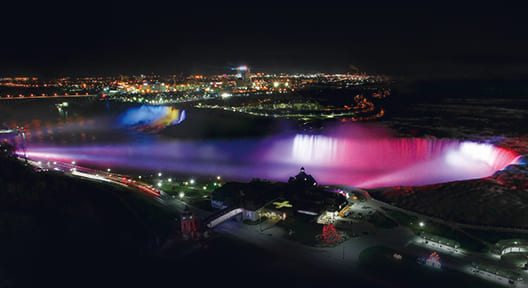
UV-C has the highest sterilizing effect out of all ultraviolet light
Ultraviolet spectrum divided into 3 categories
Ultraviolet is invisible light to the naked eye with a wavelength of 10 to 400 nm. Within this range, light with a wavelength of 100 to 280 nm, referred to as UV-C (deep ultraviolet), does not exist on the earth but has a wide range of functions such as disinfection, decomposition of organic matter, photopolymerization and sensing. Stanley Electric has technologies to develop and manufacture the UV-C light sources.
3 types of UV divided by the spectrum
| UV-A |
315 to 400 nm
Most of this passes through the ozone layer and reaches earth's surface. |
|---|---|
| UV-B |
280 to 315 nm
This is mostly absorbed by the ozone layer although some of it passes through. |
| UV-C |
100 to 280 nm
As it is absorbed in the ozone layer, does not reach the surface of the earth. |
In general, ultraviolet refers to UV-A and UV-B. Among these two types of ultraviolet that reach the earth's surface, UV-A covers about 90% and UV-B the remainder.
Though UV-C does not reach the earth and has no daily impact, it has the highest sterilizing effect out of all ultraviolet light. Progress is being made in research to use of light sources that generate UV-C to inactivate viruses and bacteria.
Types of UV-C light sources
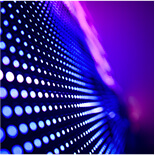
UV-C LEDs
Well known for their disinfection effect, and product development has been advancing rapidly in recent years. LED does not use mercury so has a low environmental burden, and is featured by its compact size and long-life. Stanley will have an extensive lineup of wavelengths from UV-C to UV-A, and expects those to be used in various situations and applications as the output power is increased.
UV-C LED information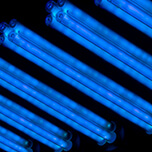
Cold cathode ultraviolet lamps
Small diameter lamps with the feature of being compact and power-saving. They reduces the amount of mercury being used such that they are not subject to the regulations of the Minamata Convention on Mercury.
UV-CCL products information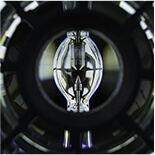
Xenon Lamp
These lamps use light produced when electrical discharge occurs in xenon gas and are used in such as camera flashes. They are featured by their ability to instantaneously produce a high intensity of light with a wide range of wavelengths. They also include wavelengths other than 250 to 260 nm and emit infrared so it is expected that they will also provide a thermal sterilizing effect through heat absorption.
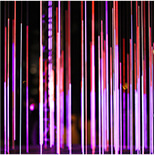
Excimer Lamp
These lamps have a light source that can irradiate ultraviolet with a light emitting principle and construction that differs to conventional discharge lamps (mercury lamps and xenon Lamp, etc.). Their emission wavelength half-width is small so they are used for R&D purpose. These lamps are used for cleaning or surface improvement process in industrial applications.
How UV-C disinfect?
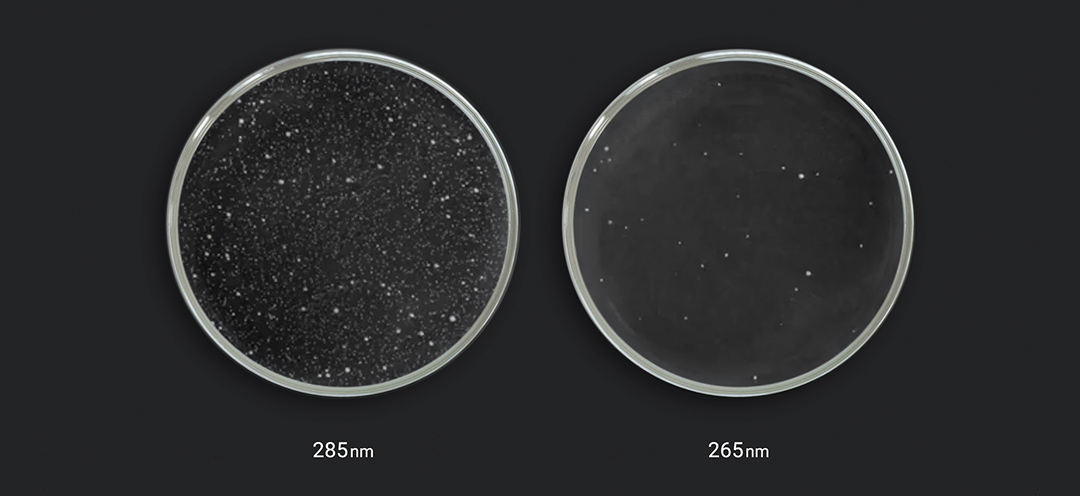
How UV-C effect for disinfection?
-
 Stanley Electric's UV-C technology
Stanley Electric's UV-C technology -
 Applications with UV-C disinfection
Applications with UV-C disinfection -
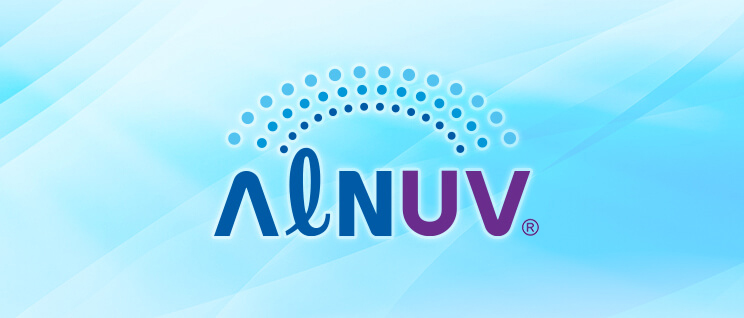 Product lineup
Product lineup
